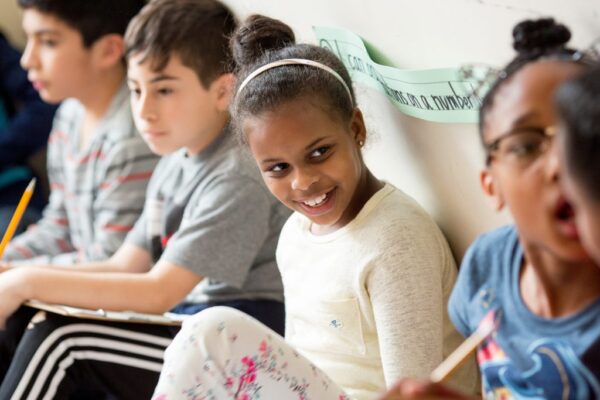Despite gains in expanding health coverage to children over the past decade, we still have about 3.3. million uninsured children nationwide. Most of them grow up in low-income and working-poor families and thus qualify for public insurance programs such as Medicaid and the Children’s Health Insurance Program (CHIP). So what can we do to get them into those programs?
Schools have an essential role to play.
We know that educators have a vested interest in ensuring children are healthy: Insurance coverage and access to preventive health care are key to healthy development and academic success.
We also know that schools serve as an important access point to health insurance coverage for low-income children and families. A recent study published in the Journal of School Health reinforces the growing body of evidence showing schools are among the best places to find and enroll low-income children who could be eligible for free or low-cost health coverage. Schools also serve as a trusted source of information for parents.
This new study points to an effective way for schools to increase enrollment in public insurance programs and increase the number of students receiving well-child exams.
In “Healthy and Ready to Learn: Effects of a School-Based Public Insurance Outreach Program for Kindergarten-Aged Children,” Jade Marcus Jenkins of the University of California, Irvine, reports that a targeted, school-based strategy piloted in North Carolina’s highest-need counties produced impressive results.
The Healthy and Ready to Learn intervention was funded by a federal grant under the CHIP Reauthorization Act and began with regional trainings for school nurses and administrative staff in North Carolina school districts on how to use the state’s Kindergarten Health Assessment form to identify uninsured children who could be eligible but were not currently enrolled in CHIP or Medicaid. Every North Carolina student submits the form and trainers emphasized the section of the forms asking parents for their children’s insurance status.
[Read More: How Can Schools Help Lift Health Barriers to Learning?]
School nurses and staff were then encouraged to identify uninsured children in their schools and to refer families to local partners to facilitate their enrollment in CHIP or Medicaid. Community physicians and nurses were also trained and encouraged to talk with families about health insurance coverage during well-child visits to fill out the required health form.
The program targeted elementary schools and school districts through a need index that incorporated county-level data on the percent of children 10 and younger living in poverty and on local unemployment rates.
The intervention yielded a 12.2 percentage point increase in health insurance enrollment rates and an 8.6 percentage point increase in the rate of kindergarten-age children receiving well-child exam rates. What’s more, focus groups and interviews found evidence that the intervention raised general awareness about public health insurance programs and amplified the importance of having parents and physicians fill out the required health assessment form correctly.
Given the findings, the researchers recommended integrating health insurance screenings into other school documents and routines, as well training school personnel and health providers to talk with parents about CHIP and Medicaid.
That may seem like adding another to a long list of school responsibilities. But children’s physical and emotional well-being is so closely linked to their academic success—whether through improved attendance, better comprehension, or healthier attitudes—that schools cannot afford to miss the opportunity to expand access to health care.
[Read More: What’s at Stake for Schools in the Health Care Bill]
Candace Webb is a Senior State Health Policy Analyst at the Georgetown University Center for Children and Families.

